Understanding the B2B Sales Cycle
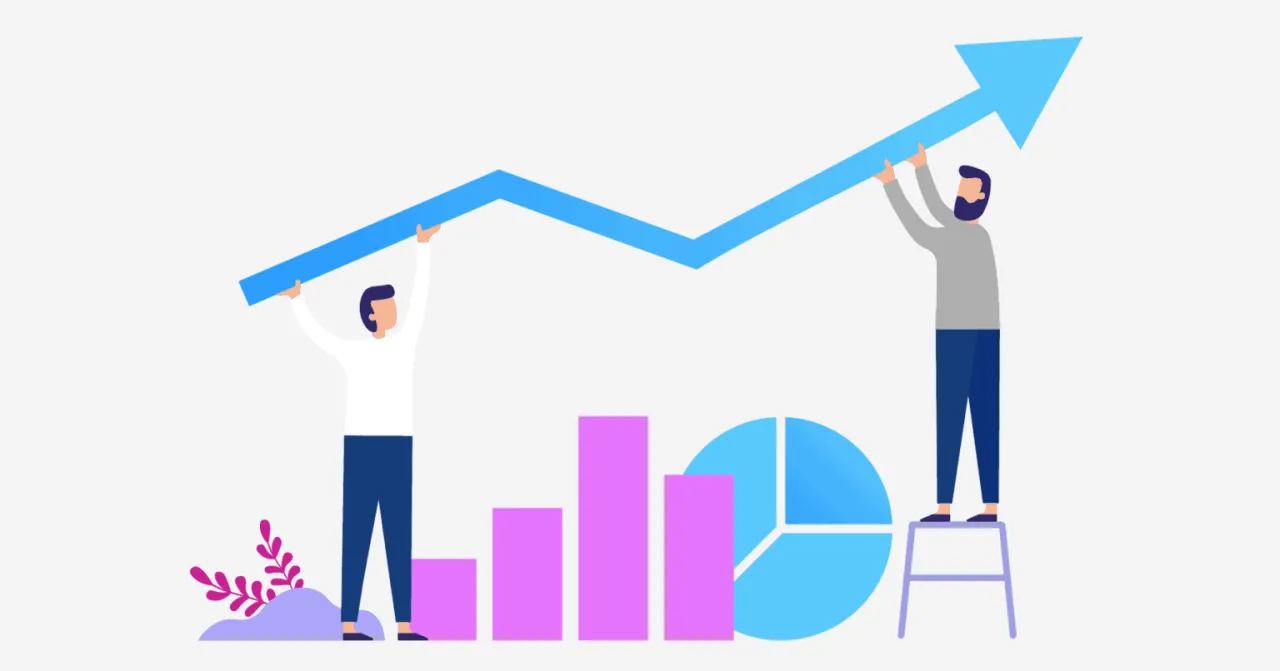
The B2B sales cycle is a complex process involving multiple stages, from lead generation to closing deals. Understanding the buying process is crucial as it encompasses the journey buyers take in making a purchase decision, including the cognitive and emotional phases they undergo.
According to HubSpot, 42% of sales reps say prospecting is the most challenging part of the B2B sales process.
By mastering the B2B sales cycle, sales professionals can enhance their performance, shorten sales cycles, and improve customer relationships to build customer loyalty.
In this blog post, we will explore the intricacies of the B2B sales cycle and provide actionable insights for sales teams.
What is the B2B Sales Cycle?
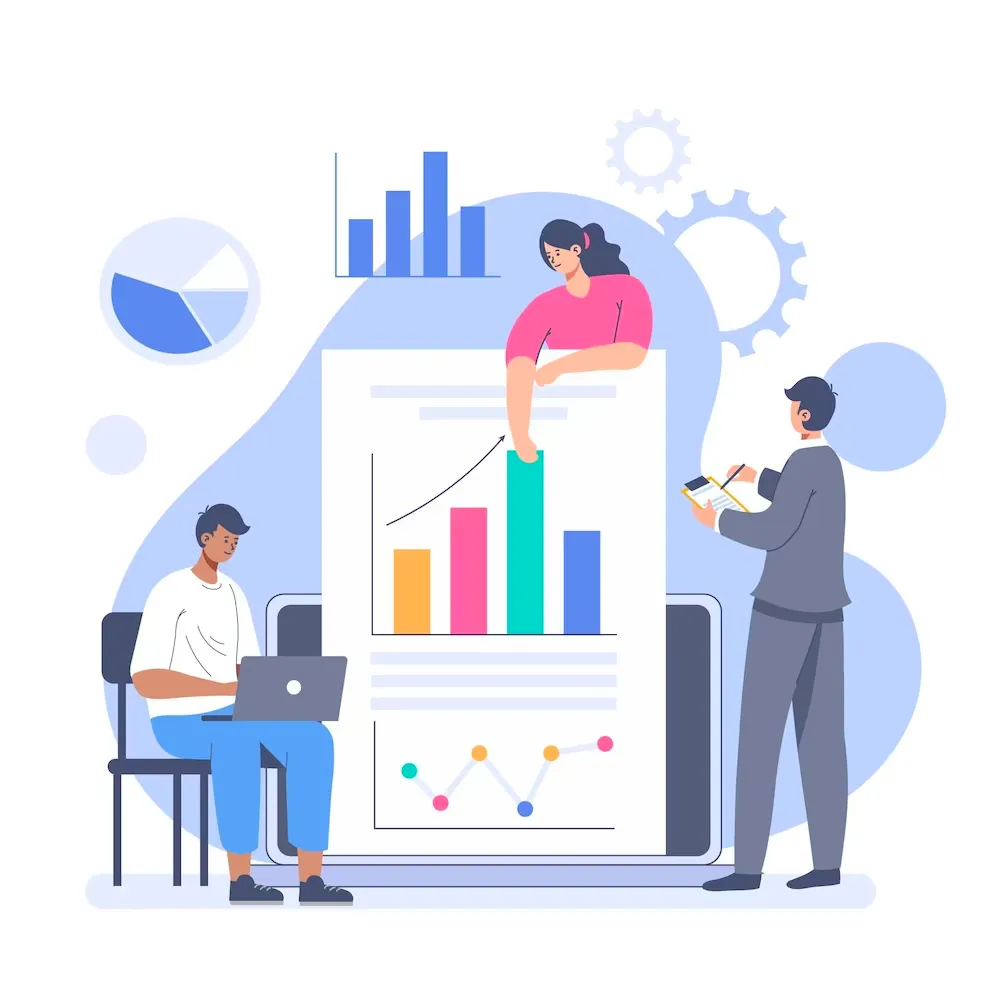
The B2B sales cycle is a structured sales process that businesses follow to sell products or services to other businesses.
Unlike the B2C (business-to-consumer) sales process, the B2B sales process and cycle involves multiple stakeholders and a longer decision-making period. The buying process in the B2B sales process involves multiple stakeholders and a thorough evaluation of potential solutions, making it more complex than the B2C buying and selling process is.
It’s essential for sales teams to understand this cycle to effectively manage and optimize their sales efforts.
Importance of a Well-Defined B2B Sales Cycle
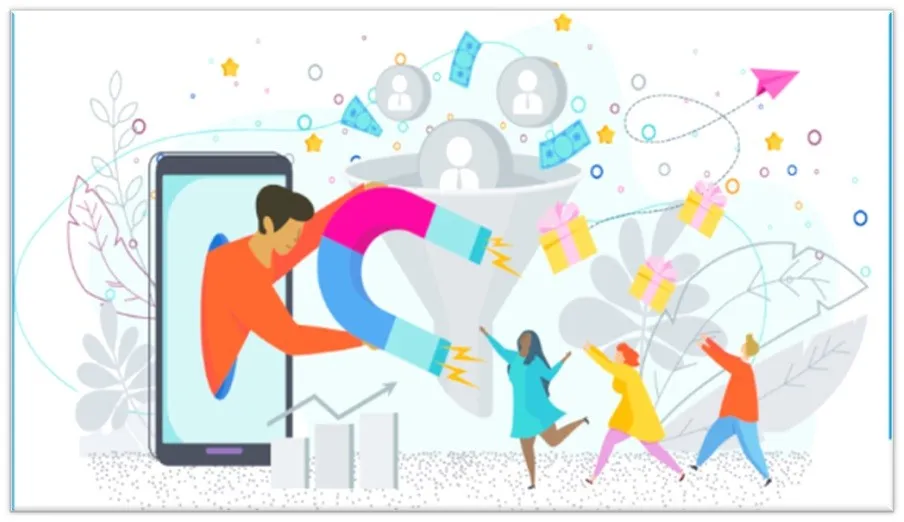
A well-defined B2B sales cycle is crucial for businesses aiming to streamline their sales process, enhance performance, and ultimately close more deals.
The B2B sales cycle involves multiple stages, each requiring careful attention and strategy.
By understanding and optimizing each phase, sales teams can significantly improve their efficiency and success rates.
Enhancing Sales Performance
A structured sales cycle helps sales and marketing teams understand where they are in the B2B sales funnel, process steps and what steps to take next.
- Efficiency: Sales reps can focus their efforts on qualified leads, reducing time wasted on uninterested prospects.
- Predictability: With clear stages, sales managers can predict outcomes and set realistic sales targets.
- Training: New sales representatives can be trained more effectively, ensuring they follow best practices from the start.
Improving Lead Generation and Qualification
A well defined sales process and a sales cycle length aids in better lead generation and qualification, critical for the success of any sales strategy.
- Targeted Lead Generation: By identifying ideal target customer profiles, sales teams can focus on generating high-quality leads.
- Effective Qualification: Using criteria like budget, authority, need, and timeline (BANT), sales reps can qualify leads more efficiently, ensuring they pursue only those with a high conversion potential.
Streamlining the B2B Sales Process
A clear sales cycle streamlines the entire B2B sales process, making it easier for sales teams to follow and manage. This structure helps in identifying bottlenecks and areas for improvement.
- Process Clarity: Sales teams can follow a step-by-step approach, reducing confusion and errors.
- Consistency: Ensures that all sales reps follow the same process, maintaining a uniform approach across the team.
- Flexibility: While providing a clear path, a well-defined sales cycle also allows for adjustments based on specific client needs and feedback.
Building Stronger Customer Experience Relationships
A structured sales cycle ensures that sales teams stay engaged with potential customers throughout the buying and selling process throughout, building stronger relationships and increasing the likelihood of repeat, business to business,.
- Consistent Follow-Up: Regular check-ins and updates keep prospects engaged and informed.
- Customer Satisfaction: Addressing customer needs effectively at each stage leads to higher satisfaction and loyalty.
- Post-Sale Engagement: A defined follow-up process after the sale ensures long-term relationships and target customers retention.
Optimizing Sales Strategies
Having a well-defined sales cycle allows sales managers to analyze data and optimize their strategies continuously.
This optimization can lead to better decision-making and improved overall and sales pipeline performance.
- Data-Driven Decisions: Sales managers can use data from each stage to make informed decisions about resource allocation and strategy adjustments.
- Performance Tracking: Key performance indicators (KPIs) can be tracked more effectively, allowing for continuous improvement.
- Scalability: A structured sales cycle can be scaled up as the business grows, ensuring sustained success.
Stages of the B2B Sales Cycle In Sales Process
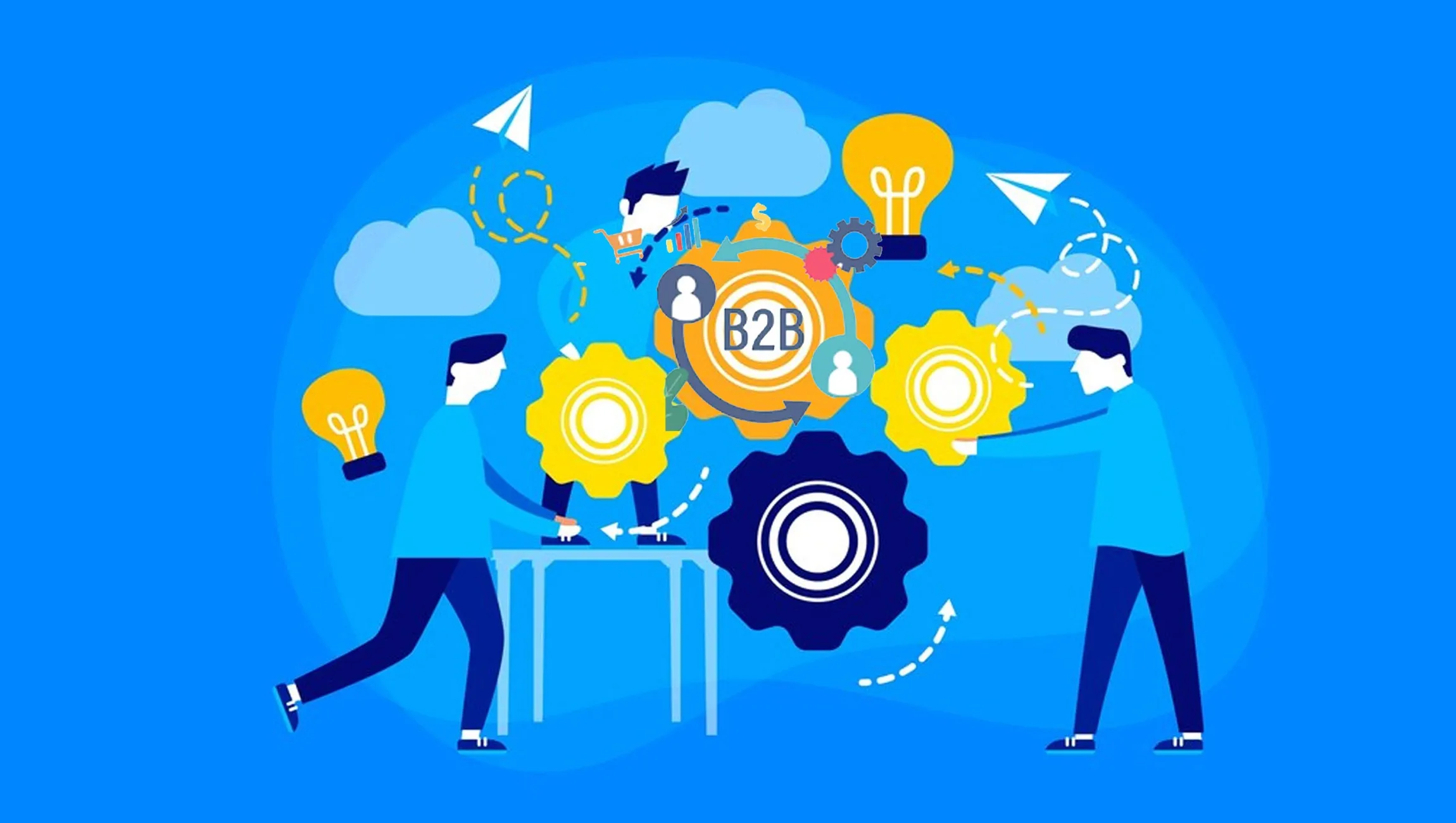
The B2B sales cycle comprises several critical stages, each essential for moving prospects through the sales funnel and ultimately closing deals.
Understanding these stages and their importance can help sales teams optimize their strategies and improve overall sales performance.
The key stages include the prospecting stage, qualifying leads, initial contact, and needs assessment.
Prospecting
Prospecting is the first stage of the B2B sales cycle, where sales teams identify potential customers.
This stage is crucial as it lays the foundation for the entire B2B sales process.
According to HubSpot, 42% of sales reps consider prospecting the most challenging part of their job.
- Identifying Potential Leads: Sales reps use various tools and techniques to find potential leads. LinkedIn Sales Navigator and industry events are popular methods for identifying prospects.
- Researching Prospects: Understanding the prospect's business and industry is essential. This involves researching company details, key decision-makers, and current challenges.
- Building a Prospect List: Compiling a list of potential leads based on the research ensures a focused approach in the next stages of the sales cycle.
Qualifying Leads
Once potential leads are identified, the next step is qualifying them.
Not all leads are created equal, and qualifying helps sales teams focus on those with the highest conversion potential.
- Using Qualification Criteria: Sales teams often use criteria like Budget, Authority, Need, and Timeline (BANT) to evaluate leads. This ensures that the focus is on prospects who are most likely to convert.
- Prioritizing Leads: By scoring leads based on qualification criteria, sales reps can prioritize their efforts. According to MarketingSherpa, 79% of marketing leads never convert into sales due to lack of lead nurturing.
- Initial Engagement: At this stage, sales reps start engaging with the qualified leads to build rapport and gather more information about their needs and challenges.
Initial Contact
Making the initial contact is a pivotal moment in the sales cycle.
It sets the tone for the relationship and can significantly influence the outcome of the B2B sales process.
- Personalized Outreach: Personalized emails and phone calls are effective methods for initial contact. Sales teams should tailor their communication to address the specific needs and pain points of the prospect.
- Setting Appointments: The goal of the initial contact is often to set up a meeting or call to discuss the prospect’s needs in more detail. According to InsideSales, it takes an average of 8 touches to reach a prospect.
- Building Trust: Establishing trust early in the relationship is crucial. Sales reps should focus on understanding the prospect’s business and demonstrating how their product or service can add value.
Needs Assessment
The needs assessment stage involves a deep dive into the prospect’s challenges and goals. During the needs assessment, it is essential to understand the buying process the prospect is going through, including their research and evaluation phases.
This stage is critical for tailoring the sales pitch and demonstrating the value of the solution business to business side.
- Asking the Right Questions: Sales reps should ask open-ended questions to uncover the prospect’s pain points, goals, and current solutions. Questions like “What challenges are you facing in your current process?” help gather valuable insights.
- Identifying Pain Points: Understanding the specific issues the prospect is dealing with allows sales reps to position their product or service as the ideal solution. According to Gartner, 77% of B2B buyers state that their latest purchase was very complex or difficult.
- Offering Solutions: Based on the needs assessment, sales reps can present tailored solutions that address the prospect’s specific challenges. This stage sets the groundwork for the next steps in the B2B sales process, leading to the proposal and closing stages.
Presentation/Demonstration
The presentation or demonstration stage is where you showcase your product or service to the potential customer.
This is your opportunity to highlight the unique features and benefits that address the prospect’s pain points.
- Tailored Presentations: Customize your presentation to align with the specific needs of the prospect. According to Forrester, 77% of B2B buyers state that their latest purchase was very complex or difficult.
- Engaging Demonstrations: Use interactive demos to engage prospects and demonstrate real-life applications of your product.
- Engaging visuals and live demonstrations can significantly impact the decision-making process.
- Highlighting ROI: Clearly outline the return on investment (ROI) and how your solution can solve the prospect’s challenges.
Handling Objections
Handling objections effectively is crucial in the B2B sales process.
This stage involves addressing any concerns or objections that the potential customer may have.
- Anticipating Objections: Prepare for common objections related to price, product fit, and timing.
- A study by Salesforce reveals that 92% of customer interactions happen over the phone, making it essential to be ready for objections during calls.
- Active Listening: Listen carefully to the prospect’s concerns and acknowledge their validity. This shows respect and understanding.
- Providing Solutions: Offer clear and concise solutions to address objections. Use data and case studies to support your arguments and alleviate concerns.
Proposal/Quotation
In this stage, you present a detailed proposal or quotation to the potential customer.
This document should outline the terms, pricing, and benefits of your offering.
- Clear and Concise Proposals: Ensure your proposal is easy to understand and highlights the key benefits of your solution.
- Customized Quotations: Tailor the quotation to meet the specific needs and budget of the prospect.
- Follow-Up: After sending the proposal, follow up to address any questions and keep the conversation moving forward.
Negotiation
Negotiation is a critical closing stage, where the terms of the deal closing are finalized. Effective negotiation skills can make a significant difference in closing the sale.
- Understanding Needs: Ensure you fully understand the prospect’s needs and constraints. This helps in finding a middle ground that satisfies both parties.
- Flexibility: Be prepared to make concessions, but also know your limits. A successful negotiation is a win-win for both parties.
- Building Relationships: Focus on building a long-term relationship rather than just closing a single deal.
- According to McKinsey, companies that excel at customer relationship management achieve a 20% higher success rate in negotiations.
Closing the Sale
Closing the sale is the stage in a sales professional or sales playbook, where the prospect makes the final decision to purchase your product or service.
- Clear Closing Techniques: Use proven closing techniques such as the assumptive close or the summary close. Research indicates that it takes an average of 6-8 touches to convert a prospect into a customer (Salesforce).
- Reassuring the Prospect: Provide reassurance about their decision and the value of your solution.
- Prompt Follow-Up: Ensure all necessary documentation is completed promptly to avoid any last-minute issues.
Post-Sale Follow-Up
The post-sale follow-up is essential for ensuring customer satisfaction and loyalty.
It involves checking in with the customer after the purchase to address any issues and ensure they are happy with the product.
- Customer Check-Ins: Regularly check in with customers to see how they are using the product and if they need any assistance.
- Feedback Collection: Gather feedback to understand the customer’s experience and identify areas for improvement.
- Continued Support: Provide ongoing support and resources to help the customer get the most out of your product.
Account Management/Customer Success
Account management and customer success focus on maintaining and growing the relationship with the customer post-purchase.
- Dedicated Account Managers: Assign account managers to provide personalized support and ensure customer satisfaction.
- Proactive Engagement: Regularly engage with customers to understand their evolving needs and offer new solutions.
- Upselling and Cross-Selling: Identify opportunities for upselling and cross-selling to expand the value provided to the customer.
Tools for Managing the B2B Sales Cycle

Effectively managing the B2B sales cycle requires leveraging the right tools to streamline processes, enhance productivity, and improve outcomes.
Here are five essential sales tools, that can significantly aid in managing the B2B sales cycle:
Salesforce
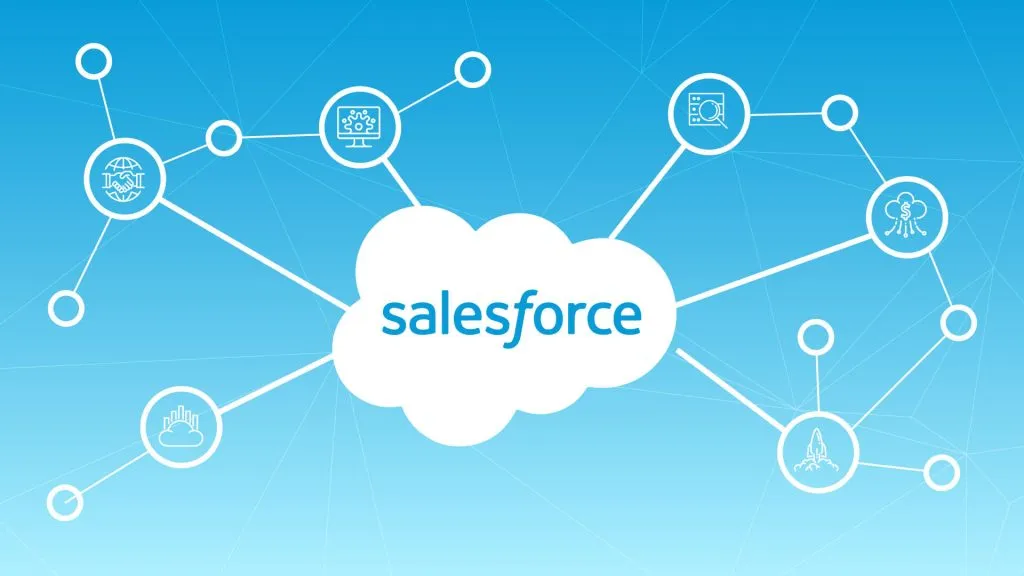
Salesforce is a comprehensive customer relationship management (CRM) platform that helps sales teams track customer interactions and manage leads.
It provides a centralized system for storing customer data, facilitating better customer retention management.
According to sales reports back to Salesforce, companies using their CRM see a 29% increase in sales revenue.
- Lead Tracking: Salesforce allows for efficient tracking of leads through the sales cycle.
- Analytics: Provides valuable insights through advanced analytics, helping sales managers make data-driven decisions.
Mailchimp

Mailchimp is a powerful email marketing platform that automates and manages email campaigns to nurture leads and engage with potential customers.
It is particularly effective for lead generation and maintaining contact with prospects.
- Email Automation: Automates follow-up emails, ensuring consistent communication with leads.
- Segmentation: Allows for targeted email campaigns based on customer behavior and demographics, increasing engagement rates.
Highspot
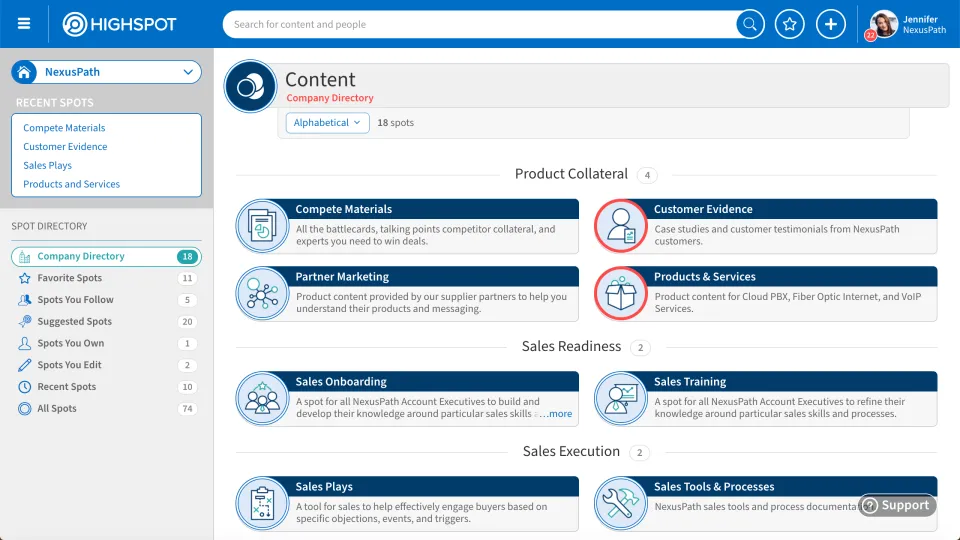
Highspot is a sales enablement tool that provides sales teams with the resources, content, and information they need to engage corporate buyers effectively.
It enhances the sales process by aligning sales and marketing efforts with the target audience and customers.
- Content Management: Organizes and provides access to sales content, ensuring that sales reps have the right materials at the right time.
- Training: Offers training and coaching tools to improve sales rep performance.
Tableau
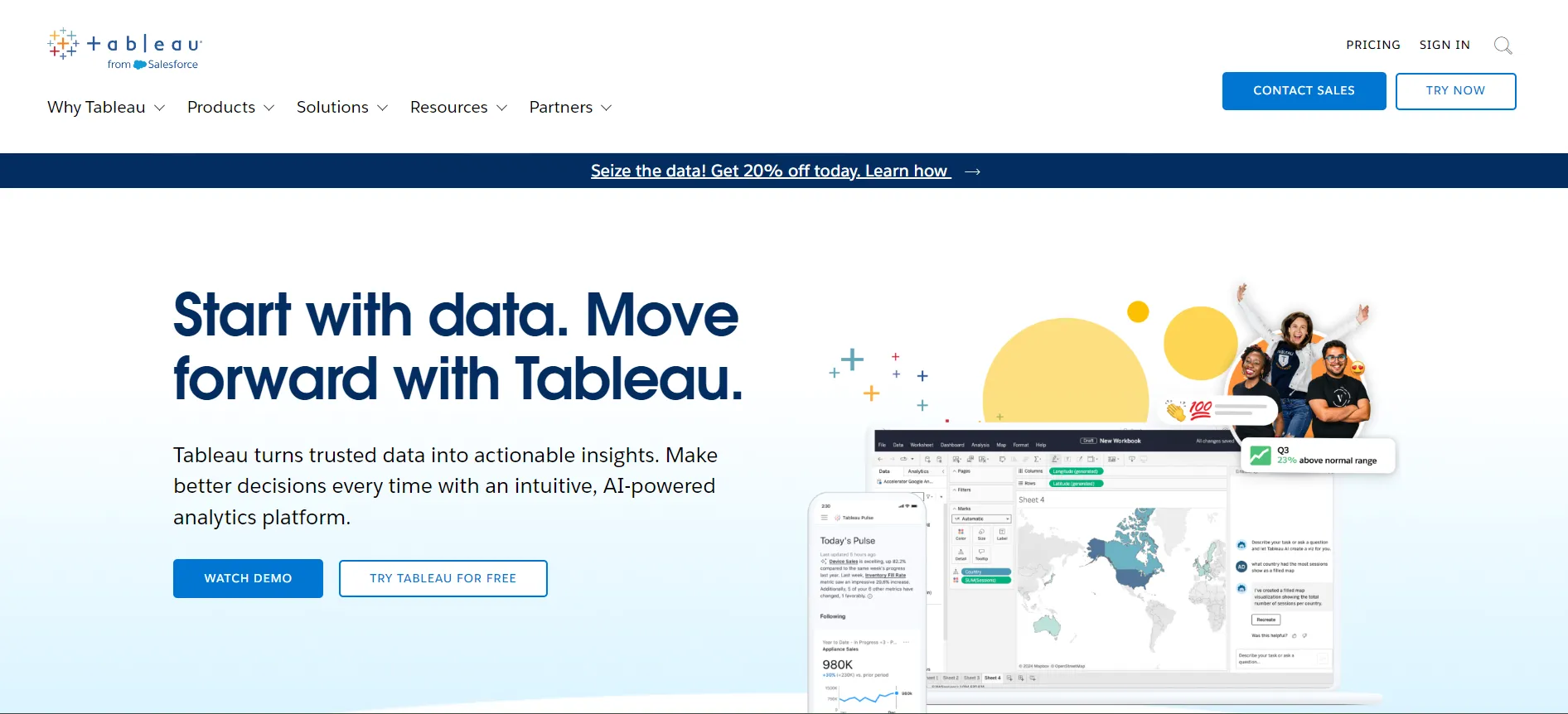
Tableau is a powerful analytics and data visualization tool that helps sales teams analyze sales data and track key performance indicators (KPIs). It supports data-driven decision-making.
- Data Visualization: Creates interactive and shareable dashboards that present sales data in a comprehensible way.
- Performance Tracking: Monitors sales performance and identifies trends and opportunities.
Who Does a B2B Sales Cycle Include?

The B2B sales cycle is a collaborative effort involving various roles, each contributing to the success of the sales process.
Understanding who is involved can help streamline operations and improve outcomes.
Sales Reps
Sales representatives are the frontline of the B2B sales cycle. They are responsible for engaging with prospects, conducting presentations, and closing deals.
According to HubSpot, 44% of sales reps give up after one follow-up sales call, yet 80% of sales representatives require five follow-up sales calls after the initial meeting.
- Engagement: Building relationships with prospects through personalized communication.
- Presentations: Demonstrating the product’s value to address the prospect’s needs.
- Closing Deals: Utilizing closing techniques to secure agreements.
Sales Managers
Sales managers oversee the sales team and ensure that the sales process runs smoothly.
They are responsible for setting sales targets, monitoring performance, with sales and marketing teams and providing coaching and support to sales representative.
- Target Setting: Establishing realistic sales goals and strategies to achieve them.
- Performance Monitoring: Using tools like Tableau to track key performance indicators (KPIs) and sales metrics.
- Coaching: Providing guidance and training to sales reps to improve their performance.
Lead Generation Specialists
Lead generation specialists focus on identifying and generating potential leads for the sales team.
They use various methods to attract and qualify leads, ensuring a steady flow of prospects into the sales funnel.
- Attraction: Using tools like LinkedIn Sales Navigator to find potential leads.
- Qualification: Assessing leads based on criteria such as budget, authority, need, and timeline (BANT).
Marketing Team
The marketing team plays a crucial role in supporting the sales cycle by creating awareness and generating interest in the product or service.
They work closely with the product solutions resources company and sales team to align strategies and ensure a consistent message to ideal customers.
- Content Creation: Developing marketing materials and campaigns to attract leads.
- Alignment: Ensuring that marketing efforts align with sales objectives.
Prospects/Leads
Prospects or leads are the potential customers that the sales team engages with throughout the B2B sales cycle.
Understanding their needs and pain points is crucial for tailoring the sales approach and closing deals.
- Needs Assessment: Identifying the specific challenges and requirements of prospects.
- Engagement: Building trust and demonstrating how the product or service can solve their problems.
10 Strategies for Sales Cycle B2B
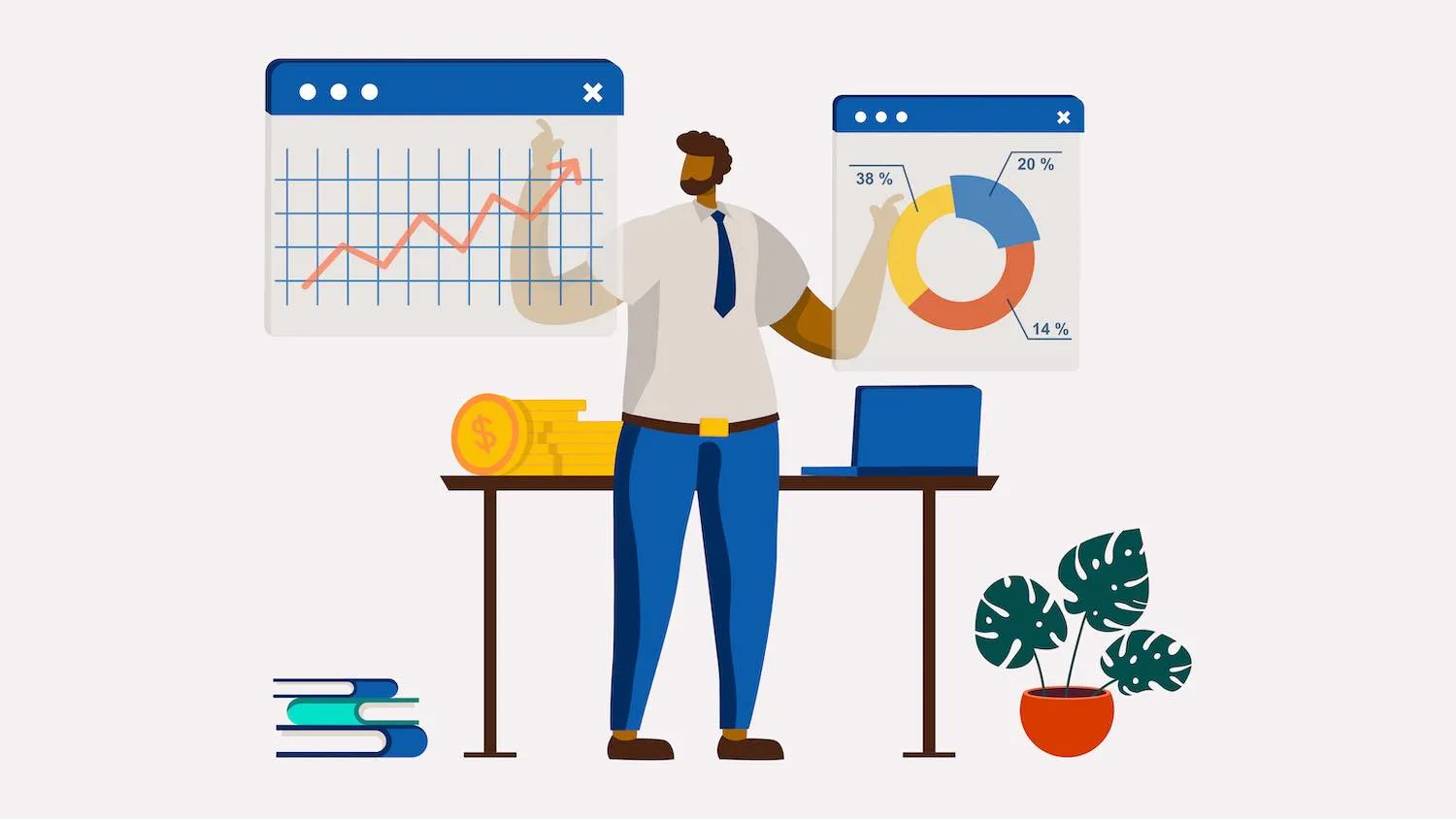
Creating an effective B2B sales cycle is crucial for driving sales and achieving business goals. Here are some essential tips:
Understand Your Target Market
Knowing your full target audience and market helps tailor your sales strategies. According to HubSpot, 42% of sales reps say prospecting is the hardest part of their job.
- Market Research: Conduct research to understand your potential customers' needs and pain points.
- Customer Profiles: Develop detailed customer profiles to guide your sales efforts.
Develop a Clear Sales Process
A well-defined and structured sales process enhances efficiency and predictability. Companies with a clear and well defined sales process see 28% higher revenue growth (Salesforce).
- Sales Stages: Outline each stage of the sales cycle, from lead generation to closing deals.
- Standard Procedures: Implement standard operating procedures for each stage.
Leverage Technology
Use technology to move sales processes and streamline your sales operations. CRM tools like Salesforce help track customer interactions and manage leads.
- CRM Systems: Implement a CRM system to centralize customer data and sales activities.
- Analytics: Use analytics tools like Tableau to gain insights and make data-driven decisions.
Train Your Sales Team
Training ensures that sales reps are equipped with the necessary skills. Effective sales training programs can increase a sales rep' performance by 20% (McKinsey).
- Regular Training: Conduct regular training sessions on sales techniques and tools.
- Performance Reviews: Use performance reviews to identify areas for improvement.
Qualify Leads Early
Early lead qualification saves time and resources. Using criteria like budget, authority, need, and timeline (BANT), you can focus on high-potential leads.
- Qualification Criteria: Establish clear criteria for lead qualification.
- Lead Scoring: Implement lead scoring to prioritize leads.sales due to lack of lead nurturing.
Personalize Your Approach
Tailor your sales strategies to meet the specific needs of your business sells each prospect. According to Salesforce, personalized sales interactions can lead to a 20% increase in sales.
- Understand Individual Needs: Research each prospect to provide solutions that address their unique challenges.
- Customized Communication: Use personalized emails and follow-ups to build stronger connections.
Build Strong Relationships
Building trust and rapport with prospects is crucial for long-term success.
- Consistent Engagement: Regularly check in with prospects to maintain the relationship.
- Trust Building: Offer valuable insights and support, positioning yourself as a trusted advisor.
Address Objections Proactively
Anticipate and address potential objections before they become obstacles.
- Prepare Solutions: Have ready answers for common objections related to price, product fit, and implementation.
- Proactive Communication: Discuss potential concerns early in the sales process.
Create Compelling Content
High-quality content can educate prospects and drive engagement.
- Informative Resources: Develop whitepapers, case studies, and blogs that address common pain points.
- Visual Aids: Use infographics and videos to make complex information easily digestible.
Streamline Your Proposal Process
An efficient proposal process can significantly shorten the sales cycle.
- Clear Proposals: Ensure your proposals are concise and tailored to the prospect's needs.
- Follow-Up: Promptly follow up on proposals to address any questions and move towards closing the deal.
How to Shorten a Sales Cycle in B2B?

Shortening the B2B sales cycle can lead to quicker revenue generation and higher efficiency. Here are some effective strategies:
Qualify Leads Early
Qualifying leads early helps focus efforts on high-potential prospects. According to MarketingSherpa, 79% of marketing leads never convert into sales due to a lack of lead nurturing.
- Lead Scoring: Implement lead scoring systems using criteria like budget, authority, need, and timeline (BANT).
- Targeted Outreach: Focus on leads that meet the qualification criteria to streamline the sales process.
Automate Repetitive Tasks
Automation saves time and reduces manual errors, allowing sales reps to focus on high-value activities.
- CRM Systems: Use CRM tools like Salesforce to automate data entry and follow-ups.
- Email Marketing: Automate email campaigns with platforms like Mailchimp to nurture leads efficiently.
Streamline Communication
Efficient communication ensures that prospects receive timely information and responses.
- Unified Messaging: Use tools like Slack for internal communication and coordination.
- Clear Channels: Establish clear communication channels with prospects for quick responses.
Leverage Data and Analytics
Data-driven decisions can optimize the sales process and identify bottlenecks.
- Sales Analytics: Use tools like Tableau to track performance and uncover insights.
- Performance Metrics: Monitor key performance indicators (KPIs) to make informed adjustments.
Create Compelling, Targeted Content
High-quality content can engage prospects and address their specific needs.
- Educational Materials: Develop whitepapers, case studies, and blogs that provide value to prospects.
- Personalized Content: Tailor content to different stages of the sales cycle to keep prospects engaged.
Use CRM Effectively
Leveraging a CRM system helps manage customer interactions and streamline the sales process.
- Centralized Data: Use CRM tools like Salesforce to keep all customer data in one place.
- Automated Tasks: Automate follow-ups and reminders to ensure timely communication.
Simplify Your Proposal Process
A streamlined proposal process can speed up decision-making.
- Clear Proposals: Ensure proposals are concise and tailored to the prospect's needs.
- Quick Turnaround: Use tools like Proposify to create and send proposals quickly.
Offer Free Trials or Demos
Providing free trials or demos to ideal customers can help prospects experience the value of your product firsthand.
- Hands-On Experience: Trials and demos reduce uncertainty and build trust.
- Engagement: Interactive demos can increase engagement and expedite the decision-making process.
Establish Clear Next Steps
Clear next steps help maintain momentum and avoid delays.
- Defined Actions: Outline the next steps at the end of each meeting or call.
- Timeline: Set clear timelines for each phase of the sales cycle to keep prospects on track.
Provide Case Studies and Testimonials
Using case studies and testimonials can build credibility and address common concerns.
- Social Proof: Showcasing successful implementations helps build trust.
- Relevance: Share stories from similar industries to demonstrate relevant success.
Conclusion
Understanding and optimizing the sales cycle B2B is crucial for any business aiming to enhance performance.
By effectively managing the sales process, utilizing sales teams and sales reps, focusing on lead generation, and closing deals efficiently, businesses can achieve significant growth.
Leveraging technology and ensuring continuous training for sales professionals are key components.
Ultimately, a well-defined sales cycle not only boosts sales volume but also strengthens customer relationships, ensuring long-term success.

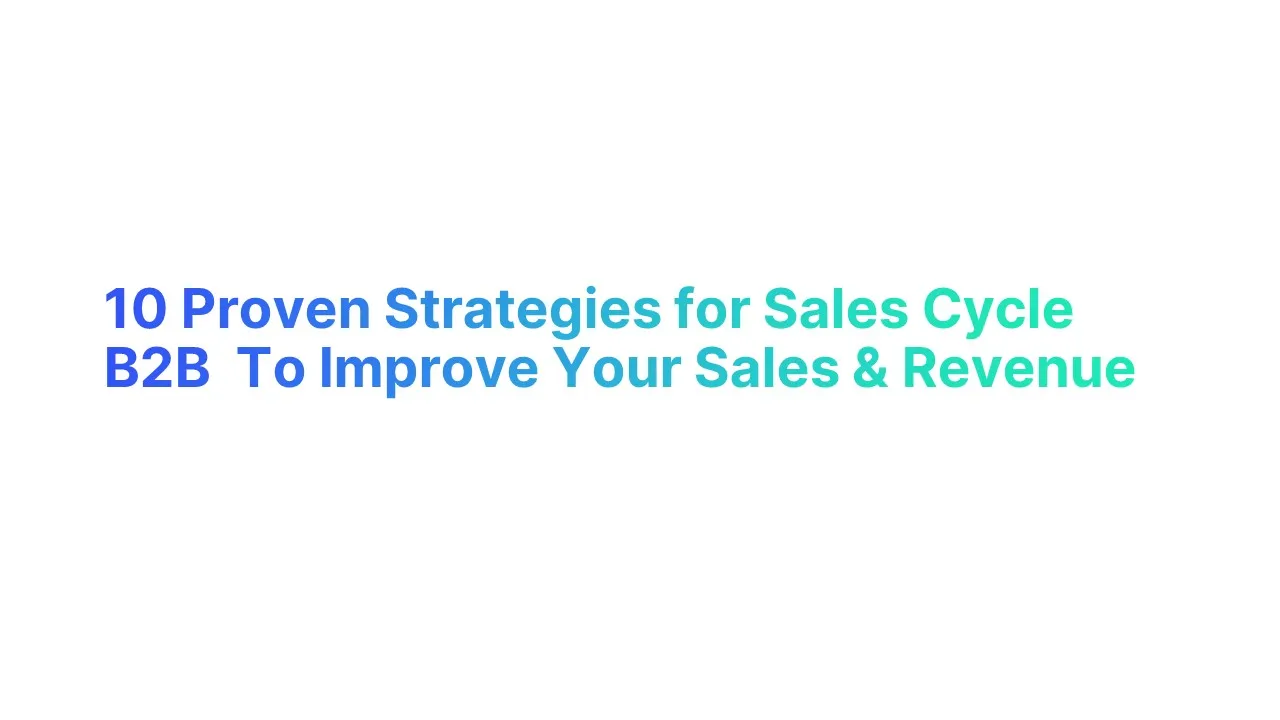



.jpg)

.jpg)
